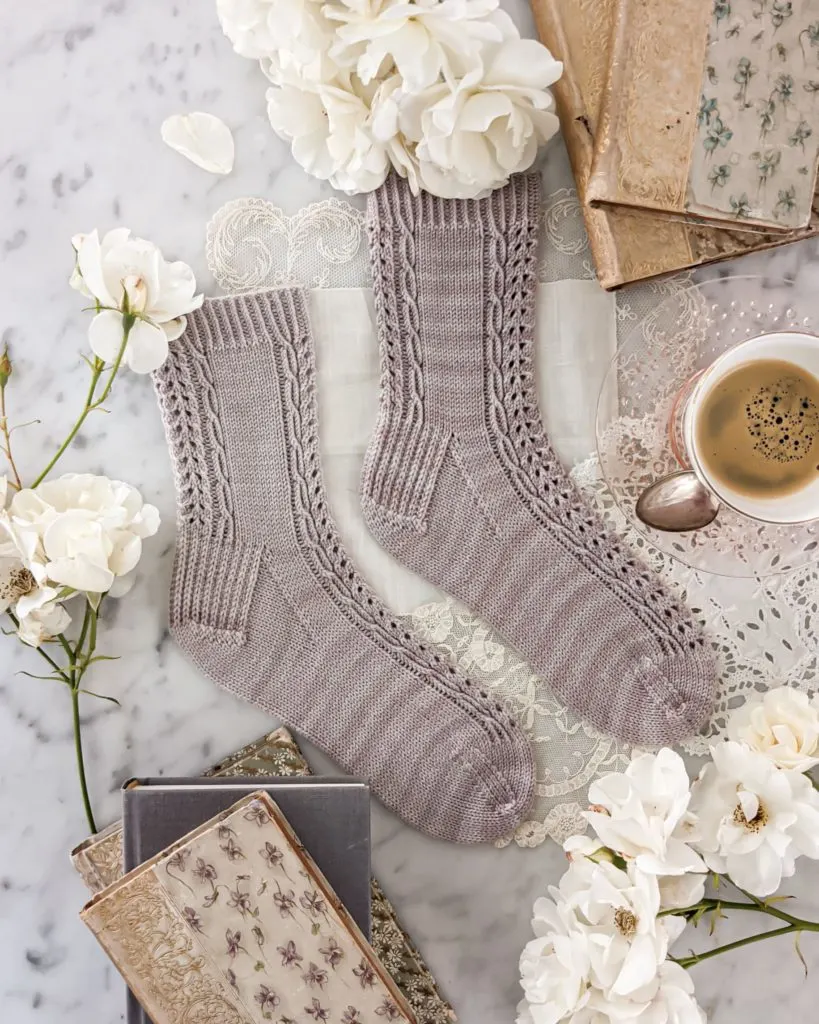If ever I have mentioned blocking your knitting or crochet projects on social media, it turns into some kind of fight.
Blocking is really hard to talk about. I have been accused of 'starting drama to get sales' in one instance for mentioning blocking. People can get very precious about something that is a personal choice. We don't have to fight about it. I think there are times when blocking is necessary and times when it's not.
In this article I'm talking about the process of blocking as in, with steam, mats, pins or boards.
There are a few things I want to say about it:
Someone not blocking their work is not an invitation for you to tell them that they are wrong.
Someone blocking their work is not a demonstration of their superiority.
In my opinion, there are some things that you don't have to block. For example, I don't block my socks before putting them on. I wash them after finishing the project and hang them out but I don't do any 'blocking' in order to shape them. I don't feel that I need to. Many other designers model the socks rather than have them shaped by sock blockers.
If I was selling the socks, I would probably block them with sock blockers. This is because it gives them a professional finish that you'd find in a shop display. I don't block socks that I am selling the patterns of because I just photograph them being worn, as some other designers do. You may want to use sock blockers because they make everything look pretty. Any choice is absolutely fine.
Some designers block and shape the samples of their sock patterns. A good example is A Bee In The Bonnet. Lauren blocks her socks and they look beautiful. These are the Lucida socks.

As you can see, the socks lie perfectly flat. This helps us to see the finer details of the sock's construction. This is a great example of where you might block socks.
Do I have to block hats?
Designers are also split on hat blocking. Some knitters will say what do you need to block a hat for? You have a head! While others will be more content with shaping it on a balloon or a dummy head to stretch it out as they want. If you've made a lacework beret, you'd be better off blocking it over a dinner plate to get that beret shape. It would also open out the lace stitches.
When I say blocking I don't necessarily mean "stretching" I mean washing it, laying it out or hanging it in a certain way to fit measurements or shapes.

Should I block garments?
This is the big one. If the material you have used has any natural fibre content, you should block it.
If you were sewing a garment, you wouldn't think twice about pressing the fabrics and the seams. Pressing gives the garment that professional finish. You wouldn't show everyone a photo of a creased heap hanging off a mannequin, nor would you wear it in that way. You worked hard to make it and you want it to look good.
It's the same with blocking your knitting and crochet. Ok, fair enough, your four year old recipient isn't bothered if their new cardigan is blocked. What about if it was for you? What about if you were hoping to sell your work?
Blocking doesn't just help with aesthetics but also fit. When you read a pattern, the gauge swatch is measured after blocking. Patterns will generally say "block to measurements".
Synthetic fibres seem to do fine without the blocking process, so don't trouble yourself with steam blocking if it seems to fit and hang well. I've never seen a natural fibre work up so well that it doesn't need shaping with blocking. Natural fibres can be bouncy or in the case of cotton, can sometimes look like you've knit spaghetti.
What about blankets?
Not always. While I think that blocking wool granny squares really helps with joining, I wouldn't do it for 100% acrylic squares. The only successful blocking method I've used for acrylic is 'killing' the fabric with an iron hovered over another piece of fabric. Guess what? I didn't like it. It just made it a bit more floppy. I don't think it makes much of a difference with acrylic.
For wool, I would recommend it. For cotton, I would recommend it. It just sharpens the corners and straightens the edges. This is particularly helpful if you aren't a master at seaming or joining, as it makes the process just that little bit easier. You can clearly see where your hook/needle is going and can line the squares up.
Always block lace
I think this goes without saying but if you've made something with any percentage of lace, please block it. It opens out the stitches and shows off all your hard work. Blocking lace can make all the difference between "Did the moths get to it?" and "That is exquisite".

Further reading:
Do you block your socks? -Louise Tilbrook
A love letter to blocking your knits- A Bee in the Bonnet.
How to block your granny squares- Hanna Gough
How to create drape in crochet- Hanna Gough

